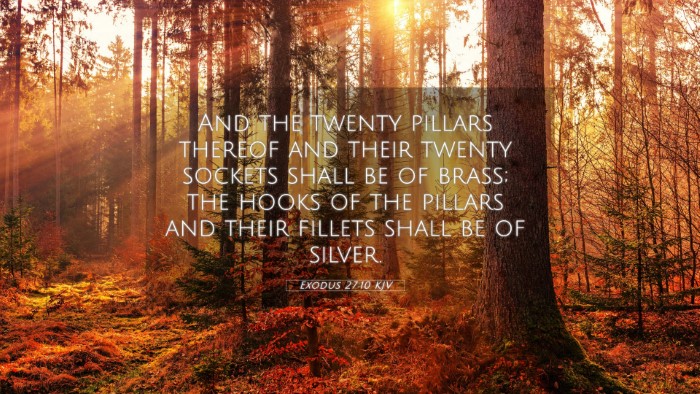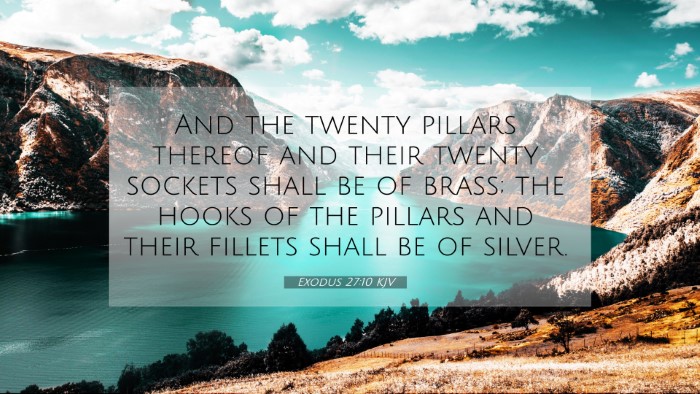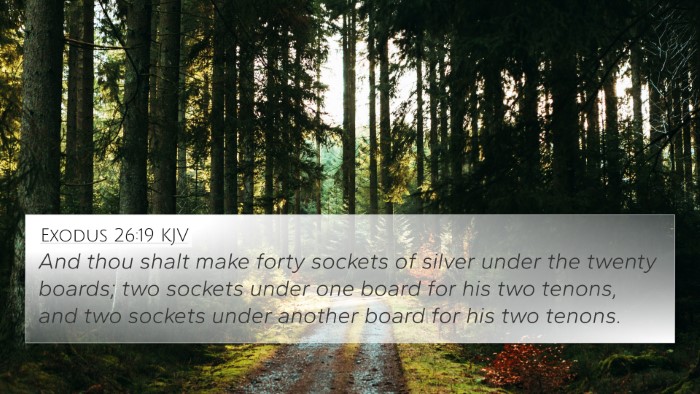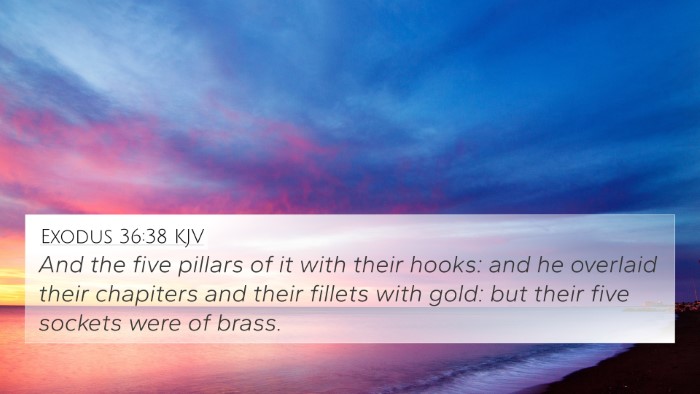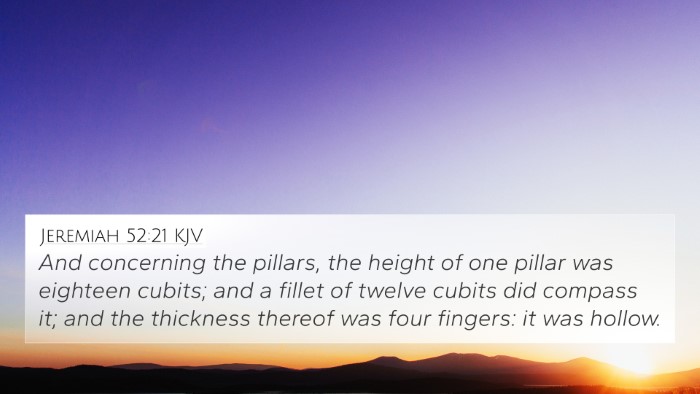Exodus 27:10 - Meaning and Interpretation
Exodus 27:10 states: "And its length shall be twenty cubits, and the breadth ten cubits."
This verse provides specific measurements for the construction of the altar of burnt offering, a critical element in Israelite worship.
Through examining this verse, we can derive a deeper understanding not only of its literal meaning but also of its spiritual implications.
Context of Exodus 27:10
The background of this passage is the instructions given to Moses on how to construct the tabernacle and its furnishings.
This dimension of the altar emphasizes God's desire for order and precision in worship practices.
In the broader Biblical narrative, the altar serves as a symbol of atonement and communion with God.
Commentary Insights
-
Matthew Henry:
Henry notes that the altar was meant to be a place for sacrifice, teaching the people that worship must be intentional and structured.
The precise measurements indicate God's attentiveness to the details of worship and the seriousness of approaching Him.
-
Albert Barnes:
Barnes highlights that these dimensions reflect a heavenly model and serve as a physical manifestation of God’s covenant with His people.
He elaborates on how the altar links to themes of sacrificial atonement throughout the Scriptures.
-
Adam Clarke:
Clarke underlines the importance of the altar's size in relation to its function, linking it to aspects of public worship.
He also connects this altar with the ultimate sacrifice of Jesus Christ, indicating the foreshadowing of redemptive history.
Bible Verse Cross-References
Exodus 27:10 connects with various other scripture passages that enhance its meaning:
- Leviticus 1:11: Describes the procedures for offering sacrifices at the altar, reflecting its importance.
- Hebrews 13:10: Alludes to the altar set in the New Covenant context, bridging old and new worship practices.
- Revelation 8:3: Indicates the altar's role in heaven, emphasizing its lasting significance in God's presence.
- Matthew 23:19: Relates to the sanctity of the altar, showing its spiritual importance.
- 1 Peter 2:5: Connects the concept of believers as "living stones" built into a spiritual house, analogous to the altar's purpose.
- Romans 12:1: Reflects the idea of presenting our bodies as living sacrifices, correlating with the significance of the altar in worship.
- Ephesians 2:20-22: Speaks of the Church being built on the foundation of the apostles and prophets, linking back to the idea of God's dwelling place.
Thematic Bible Verse Connections
Understanding Exodus 27:10 also invites thoughts on broader thematic connections within Scripture:
-
Worship and Sacrifice: The altar is central to the notion of sacrifice in the Old Testament, paralleling New Testament teachings on Jesus’ ultimate sacrifice for humanity.
-
God’s Presence: Altars throughout scripture signify where the people meet God, indicating the importance of setting apart specific spaces for divine encounter.
-
Community Worship: The altar encourages collective worship, anchoring community identity in the faith practices authorized by God.
Tools for Bible Cross-Referencing
For those looking to delve deeper into cross-referencing Biblical texts, several tools can enhance your study:
- Bible Concordance: A valuable resource for locating and understanding the context of various verses.
- Bible Cross-Reference Guide: This can provide parallel verses and thematic studies anytime you explore a specific topic.
- Cross-Reference Bible Study: A methodical approach can unveil deeper layers of meaning and context.
- Bible Reference Resources: Such resources aid in the exploration of connections and shared themes in scripture.
- Comprehensive Bible Cross-Reference Materials: Detailed guides can assist in mastering scriptural cross-referencing techniques.
Identifying Connections Between Old and New Testament
When you explore Exodus 27:10, consider how the altar foreshadows the actions and significance of Christ:
-
Jesus as the Ultimate Sacrifice: The altar's purpose in the Old Testament is echoed in the New Testament with Jesus’ sacrifice.
-
Religious Rituals: Both Old and New Testaments emphasize rituals that connect believers to God, showing continuity in worship practices.
Conclusion
Exodus 27:10 serves as a rich verse that can deepen our understanding of worship, sacrifice, and God’s covenant.
By utilizing tools for Bible cross-referencing, believers can uncover profound connections within Scripture, thus enriching their faith journey.
The grand tapestry of the Bible showcases how verses relate to one another, enhancing our comprehension of divine truth across both Testaments.

